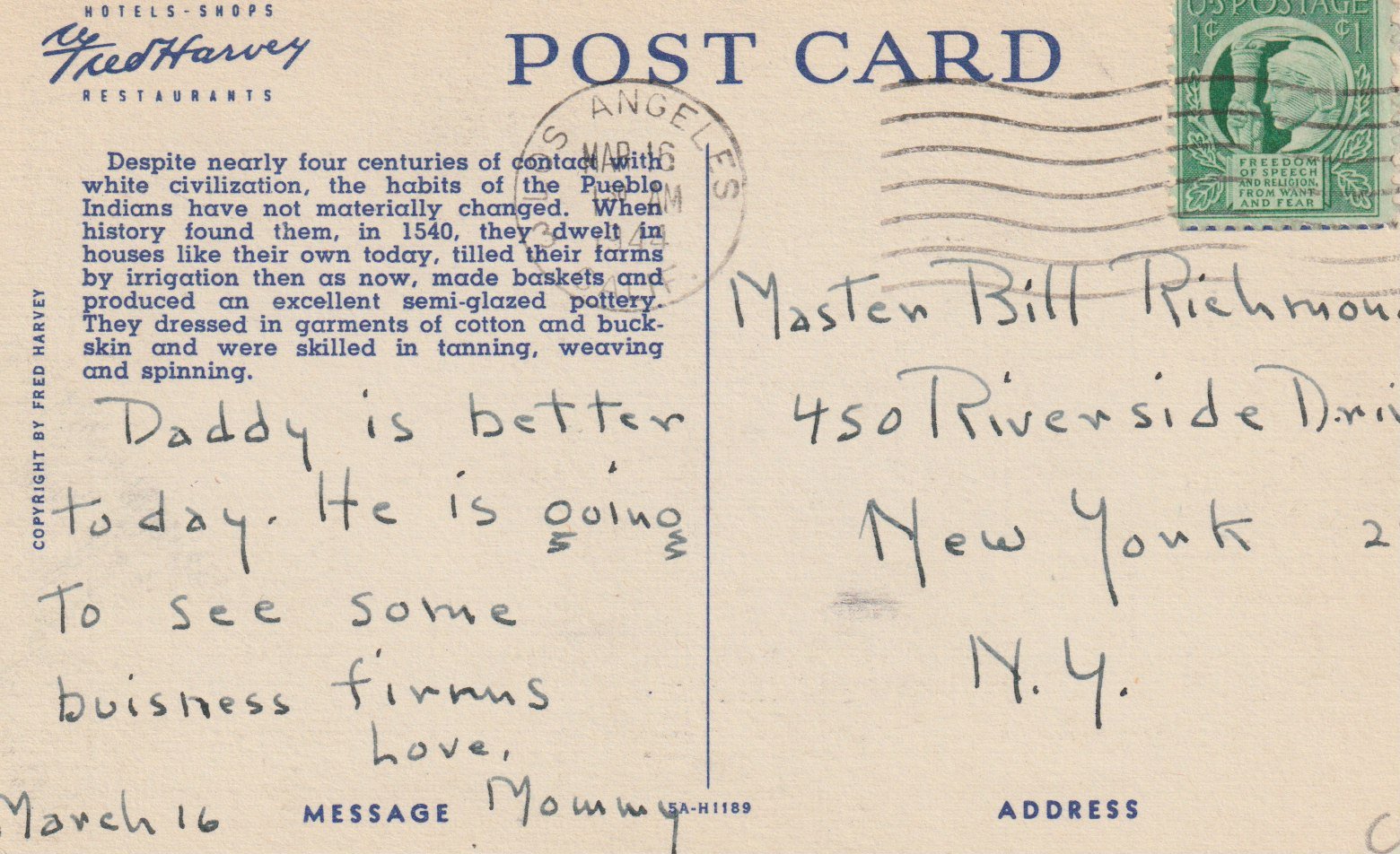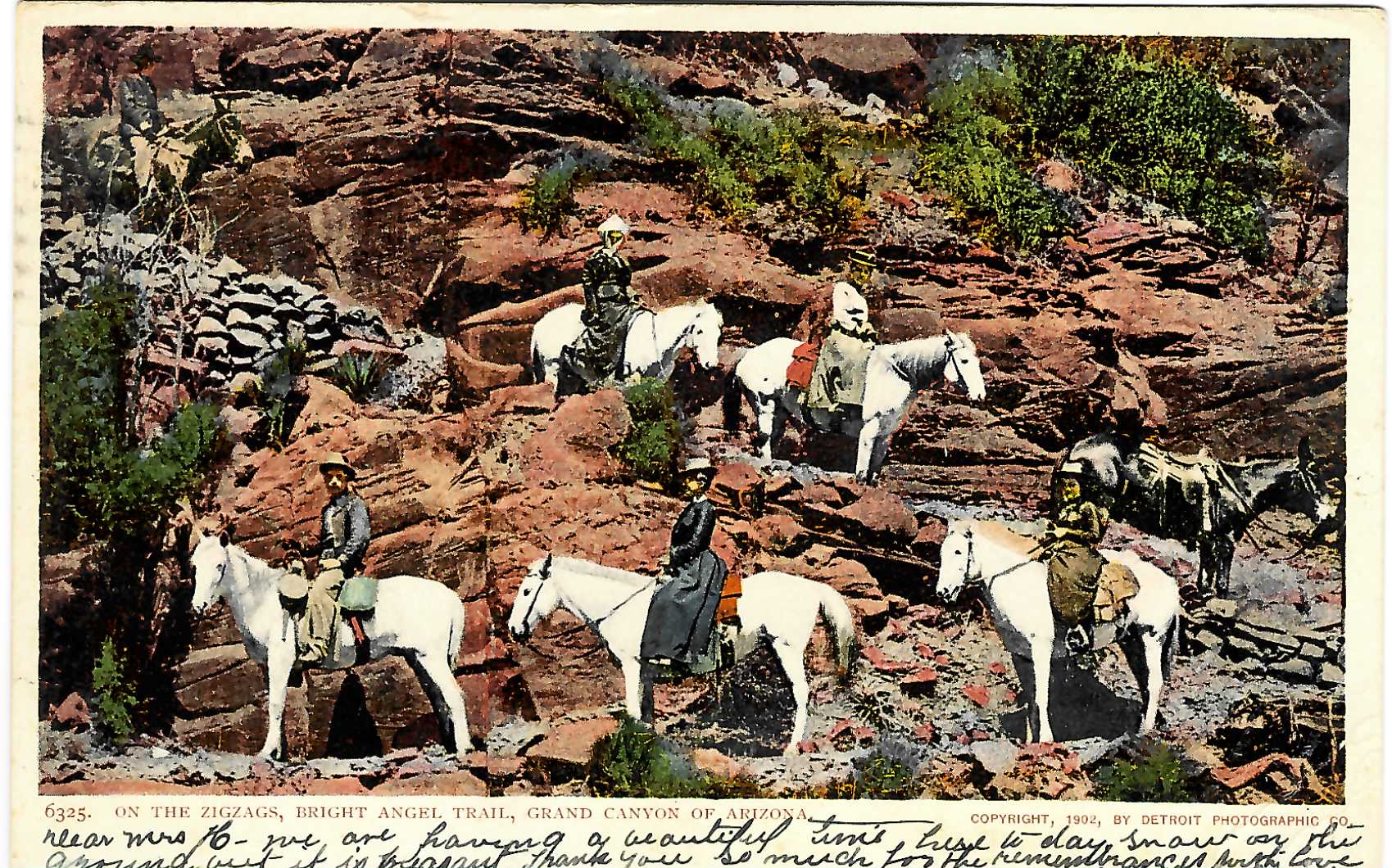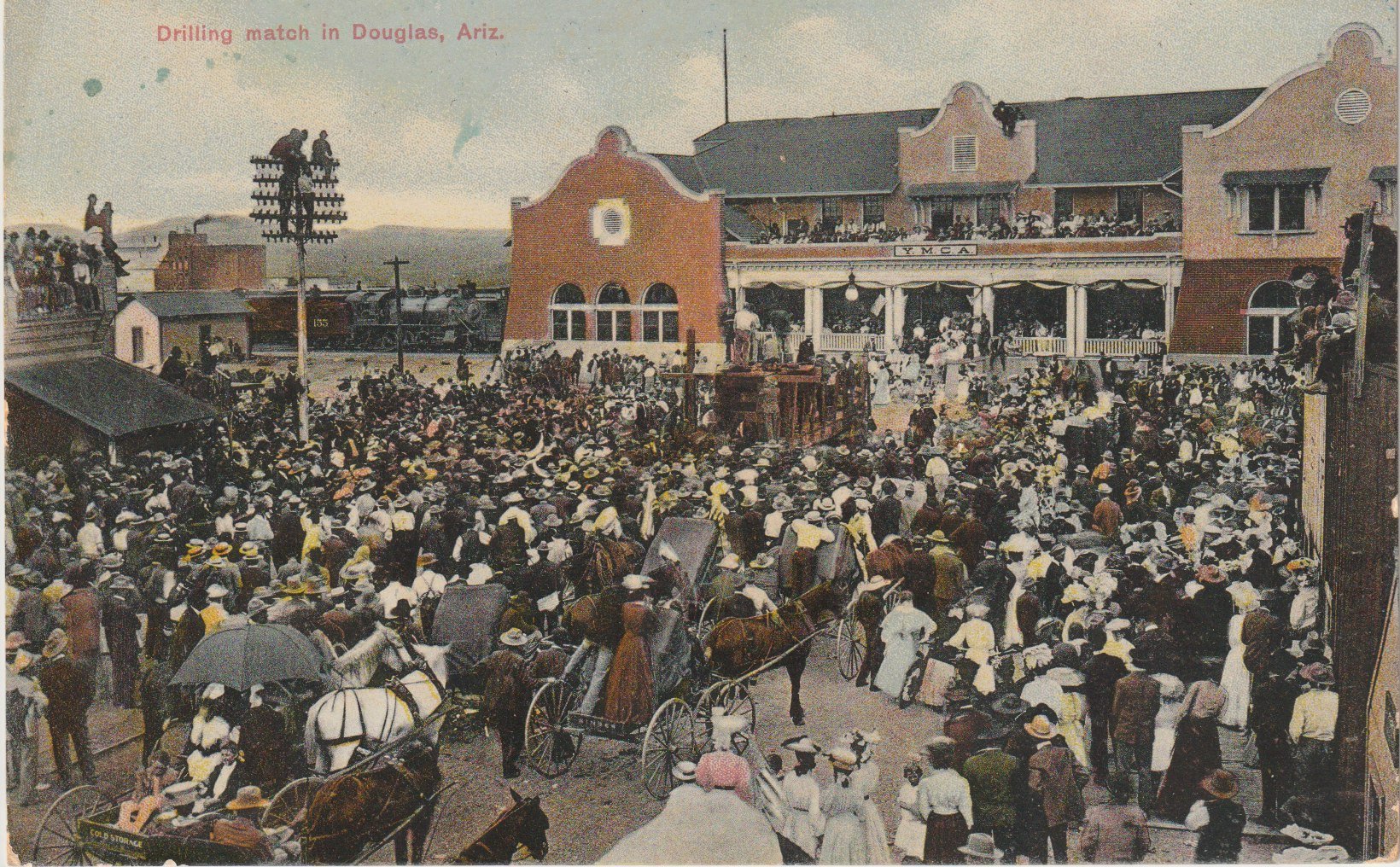
FREEDOM. RELIGION. MASTER BILL.
Master Bill probably received a post card a day after Mommy’s offer of a “fox tail for his Indian suit.”
She says, “Daddy is better today. He is going to see some business firms. Love, Mommy”
There must be a card somewhere dated a few days before the March 16thcard. I wonder what Daddy did for a living and what he was feeling better from? I’ve been looking around at various websites to figure out Master Bill or Daddy – thinking perhaps Daddy was William Richmond. Sadly, I’ve found nothing, which seems a little odd, given the neighborhood in New York. I thought they would certainly be on the social pages.
It would be fascinating to know more about these people. I can presume, given the date, that they traveled by train. It would explain the Fred Harvey postcard and the pueblo theme of these cards.
The postcard itself says: “Despite nearly four centuries of contact with white civilization, the habits of the Pueblo Indians have not materially changed. When history found them, in 1540, they dwelt in houses like their own today, tilled their farms by irrigation then as now, made baskets and produced an excellent semi-glazed pottery. They dressed in garments of cotton and buckskin and were skilled in tanning, weaving and spinning.”

So, aside from the derogatory assumption that every person wants “white civilization”, it is interesting to note how the Pueblo and other tribes of the Southwest figured out irrigation, cross-breeding crops and how to diversify farming techniques.
First of all, ancient peoples of the southwest tamed corn from a wild grass to a food that humans could cultivate and rely on. Farming itself is a religious belief of the Hopi, giving it an entirely different meaning. I like the idea of honor and respect in regard to farming, but these people have been practicing that for thousands of years. Something to think about…
Cross-breeding beans, corn, squash, melon, cotton and other crops made life possible. In addition to that feat of genetic engineering, they figured out how to farm in a way that circumvented destruction of an entire crop. Different farming methods and locations were used to diversify farming. Some rain falls in traditional Pueblo areas, but not much – about 10 – 12 inches per year. Relative humidity is low, so water evaporates from leaves – did you ever wonder why desert plants have such tiny leaves? Mother Nature’s answer to low humidity.
They planted seeds in flood plains, so that the infamous flash floods of the Southwest, watered their farms. These areas have higher water tables, are rich in silt, therefore, nourishment for the plants, but too much flooding would destroy a crop. So, they irrigated where that made sense. To supplement these two methods, arroyo mouths were farmed. These are small streams with slow moving water and lots of soil. Soil falls out of slow moving water, so lots of nutrition for the plants. Fields were built in these areas with stone to keep soil and water in the field, instead of running off the cement like earth called caliche. Last, they used sand dune farming. Hard layers of rock, topped by sand create a natural trap for the water and prevent evaporation. Amazingly clever people. I am certain that farmers and ranchers learned and utilized quite a bit of these techniques as they settled in Arizona.
On to the stamp on this card. The year is 1944, it is about 18 months until the end of World War 2. The stamp itself says Freedom of speech and religion, from want and fear. These are the four freedoms that FDR spoke about in his famous speech of 1941, which ultimately contributed to the Universal Declaration of Human Rights.
And here we are – farming as religion or religion as farming, the Four Freedoms, which contributed to world wide human rights and Mommy, writing home, all in a postcard. This is what fascinates me every time – what stories come from a 3 ½ by 5 ½ inch card? Answer: many combined in one small artifact.
Until next time.
Sherry
Share this post:3 Comments
-
-
Mary Frances
I really enjoy your narration and extremely impressed with your historical knowledge. You are a gifted writer and I appreciate your sharing this unique approach to history. Thank you so much.







Joan
Sherry,
Your thoughts continue to amaze me. The connection between religion and farming is so true. Imagine tilling the fields with so little water.
Feeding the family!!!♥️